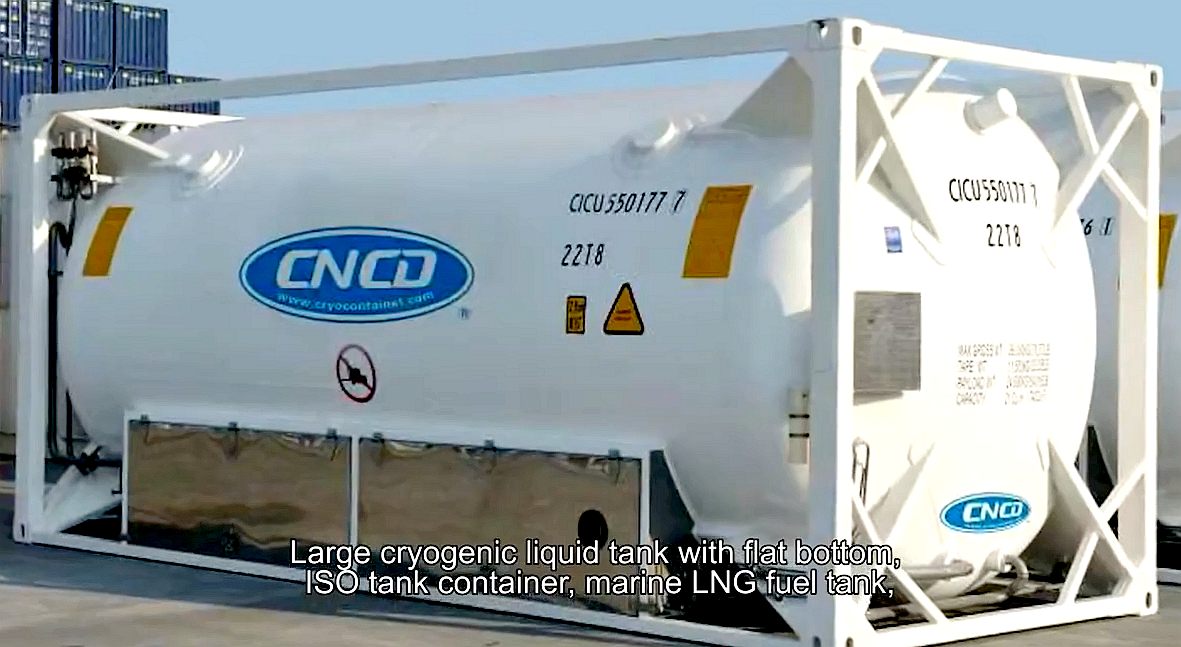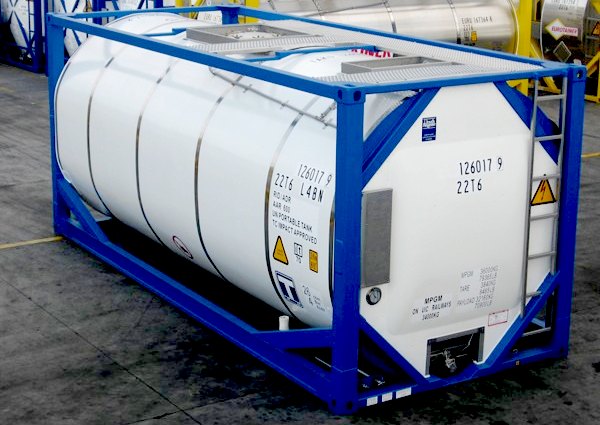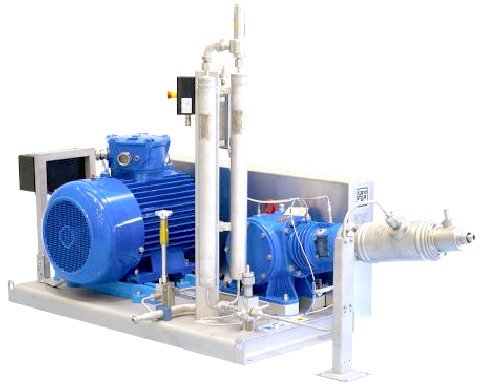|
YACHT No 1 - MTU FRIEDRICHSHFEN
Please use our A-Z INDEX to navigate this site or return HOME
|
|
Yacht No 1 - hydrogen fuel cell powered
MTU
FRIEDRICHSHAFEN - NUMBER 1 YACHT
CONTACTS
....
STANDARD
ISO CONTAINERS - A 20m3 cryogenic tank, multi-layered vacuum insulation
container in stainless
steel. These units are heavier than a comparable aluminium tank such as
those developed for the Space
Shuttle, but they are more economical and
available off the shelf. Large tanks are available from many
manufacturers concerning LNG and hydrogen, where cryogenic
temperatures
are involved.
LH2 TRANSFERS - Cryostar (Zone Industrielle, 68220 Hésingue, France) has developed a range of liquid hydrogen piston pumps with large capacities and small footprints, as an ideal system for increasing the pressure of hydrogen. For example, the A-MRP 40/55-K LH2 cryo pumps are explosion proof skid mounted piston pumps designed for simple and safe installation for use with a liquid hydrogen source. Three different sizes are available, with capacities ranging from 6 to 190 kg/h with easy flow adjustment. They can be used with all types and makes of LH2 tanks and ISO containers.
MARINE HYDROGEN PROJECTS
2000 - The 22-person Hydra ship was demonstrated.
2003 - Duffy-Herreshoff watertaxi went into service.
2003 - Saw the debut of Yacht No. 1, and Hydroxy3000, Germanisher Lloyd, MTU Friedrichshafen
2004 - The AUV DeepC, and Yacht XV 1 were shown.
2005 - The Type 212 submarine, powered underwater by fuel cells, went into service with the German navy.
2006 - The 12-person Xperiance was debuted, as well as the Zebotec.
2007 - The 8-person Tuckerboot and the Canal boat Ross Barlow debuted.
2008 - The 100-passenger Zemships project Alsterwasser went into service in Hamburg.
2009 - The Nemo H2 and the Frauscher 600 Riviera HP went into service.
2013
- The Hydrogenesis Passenger Ferry project went into service. 2018 - HySeas III project: A consortium to build the world’s first sea-going car and passenger ferry fuelled by hydrogen fuel cell propulsion, secured EU funding. The vessel is planned to operate in and around Orkney by 2021, which is already producing hydrogen from constrained renewable energy. The project is being led by Ferguson Marine Engineering Ltd (which is also involved in SWIFTH2) and St. Andrews University.
2018 - Jules Verne 2, hydrogen-powered passenger vessel, Nantes
2020 - The car ferry MF Hydra is under construction in Norway. It uses liquid hydrogen, two 200 kW fuel cells, a 1.36 MWh battery, and two 440 kW diesel generators. The hydrogen tanks and the fuel cell are located on top of the ferry. The hydrogen is trucked from Leipzig in Germany.
2021 - The Kawasaki Suiso Frontier (New Sunshine) Project ClassNK Approval in Principle liquefied hydrogen tanker.
2023 - Norwegian Fjord cruise ship Havilla, Havyard, NES, liquid hydrogen fuel cell & battery powered
|
|
ZEWT ALORS - The solar and wind powered 'Elizabeth Swann' will feature solar collectors and wind energy harvesting apparatus in an advanced configuration. Her hull configuration is ideal to incorporate mass hydrogen storage tanks, offering ranges of up to 4,000nm on compressed gas. This yacht could circumnavigate the globe on one fill up of liquid hydrogen, cryogenically stored, with sufficient capacity with mobile bunkering, to go around the world in 80 days or less, to equal the famous Jules Verne round the globe record. We live is a world literally frying itself using fossil fuels, where anything is possible, if Cop26 yields climate friendly policies to accelerate CO2 reductions or transport emissions.
|
|
A-Z
INDEX OF H2 POWERED FUEL
CELL CONCEPTS
LIQUID HYDROGEN LINKS & REFERENCE
https://www.energy-observer.org/innovations/jules-verne-2-navibus-nantes-hydrogen-propulsion
|
|
Please use our A-Z INDEX to navigate this site or return HOME
This website is Copyright © 2021 Jameson Hunter Ltd
|



